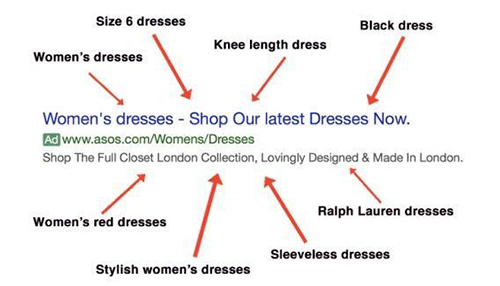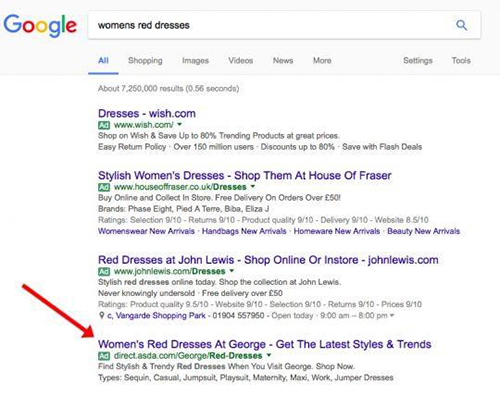Of all the digital marketing services offered by a New York SEO company, PPC marketing is an integral part. With experience, these expert marketers have developed various strategies to help their client companies succeed in the midst of intense competition. Thinking outside the box brings many ideas to mind, one of which involves single keyword ad groups (SKAGs).
SKAGs make your Google Ads campaigns easier to understand and manage. Ultimately, that gives you a greater click-through rate (CTR), lower cost per click (CPC), lower cost per acquisition (CPA) and a higher impression share. When things get simpler, they get more efficient and function like a well-oiled machine. You want that from your keyword marketing campaigns.
What Are SKAGs?
Single keyword ad groups, refer to ad groups having just a single keyword. That may appear against the normal practice, where you have many keywords for each ad group. Even Google recommends adding 10 to 20 keywords for each ad group. But it’s a webmaster’s nightmare to write ads relevant to each and every keyword of their ad group. Failure to do that then reduces their Quality Score, and targeting all these keywords becomes very hard. Not only do you have to create content relevant to all these keywords, but you also have to come up with bidding strategies for them.
Why Are SKAGs So Important?
As you can see from the example above, you have various keywords applicable to the ad but are only loosely relevant. With a single keyword ad group, you can create highly targeted ads which will obviously result in greater performance for your ads. There will only be a single keyword that triggers your ads. You may say that your ad won’t appear for other related keywords or more generic searches. But you can never write a copy that is relevant for all these search phrases. Then your ad could lose out to other relevant ads, significantly reducing your chances of people actually clicking your ad. It would also drop your Quality Score.
However, when you have only one keyword to optimize your ads for, you can make them quite relevant and specific. As a result, the chances of people clicking it are significantly greater since the ad contains the exact keyword they are looking for. With greater relevance, the click-through rate for your ad increases, providing more opportunities for your ads to work for you and raise your earnings. Ad relevance also eventually raises their Quality Score.
Remember the example we mentioned above? Here’s how a highly relevant ad copy would perform for a specific search:
Anyone searching for “women’s red dresses” would, in all probability, click the fourth ad since that has exactly what they are looking for.
How Can You Split Ad Groups in a PPC campaign?
You can select on the basis of a single theme or keyword as we saw in the example above. One of the ways to do it is to set up a single keyword with a single match type for each ad group. You can also set up a single theme but with multiple keywords all depicting that theme, for each ad group. This particularly works when you have different versions, types or colors of the product you are selling. Let us suppose you are selling men’s shoes. Though the theme is “men’s shoes”, you can use keywords such as “men’s sports shoes” or “men’s formal shoes” with various match types. You can get different ad groups set up for a particular product category.
On the other hand, if you sell only one kind of men’s shoes such as blue sports shoes, you can get a single product ad group created where you have all the keywords representing the product without compromising on relevance and specifics. You then need to create one ad and landing page with those keywords. With this approach though, the problem of irrelevance surfaces. So, you need to be careful while selecting the keywords. You can have keywords such as “blue sports shoes”, “men’s blue shoes”, “blue shoes”, “blue sports shoes for men”, etc. If you’re selling branded shoes, you can add the brand name to your keywords as well, such as “Nike blue sports shoes” or “Reebok men’s blue sports shoes”.
Also Read
More Powerful Updates Added To Google Ads Performance Planner
Top PPC Marketing Trends an Organic SEO Company Would Follow in 2022
Keyword Match Types
Another way to do this is through keyword match types. You need a good understanding of the way people search for your products or services. After you have studied their search patterns, you can create exact and phrase match types of keyword phrases. However, you need to identify irrelevant keywords that can come up because you may have to deal with unqualified traffic to your ad, which does you no good. Once you identify these irrelevant keywords, you can prepare a list of negative keywords to avoid. You can do this by using long-tail keywords. They can help you get more specific with your match type and target the audience that really matters.
While it is important to get specific, you also need to remember that exact match keywords would also limit the number of people you reach out to. Broad match keywords will give you a greater reach, but without relevance, such reach is of limited use only.
An experienced search engine optimization company in New York can develop competitive PPC strategies for clients that help increase their ROI.






